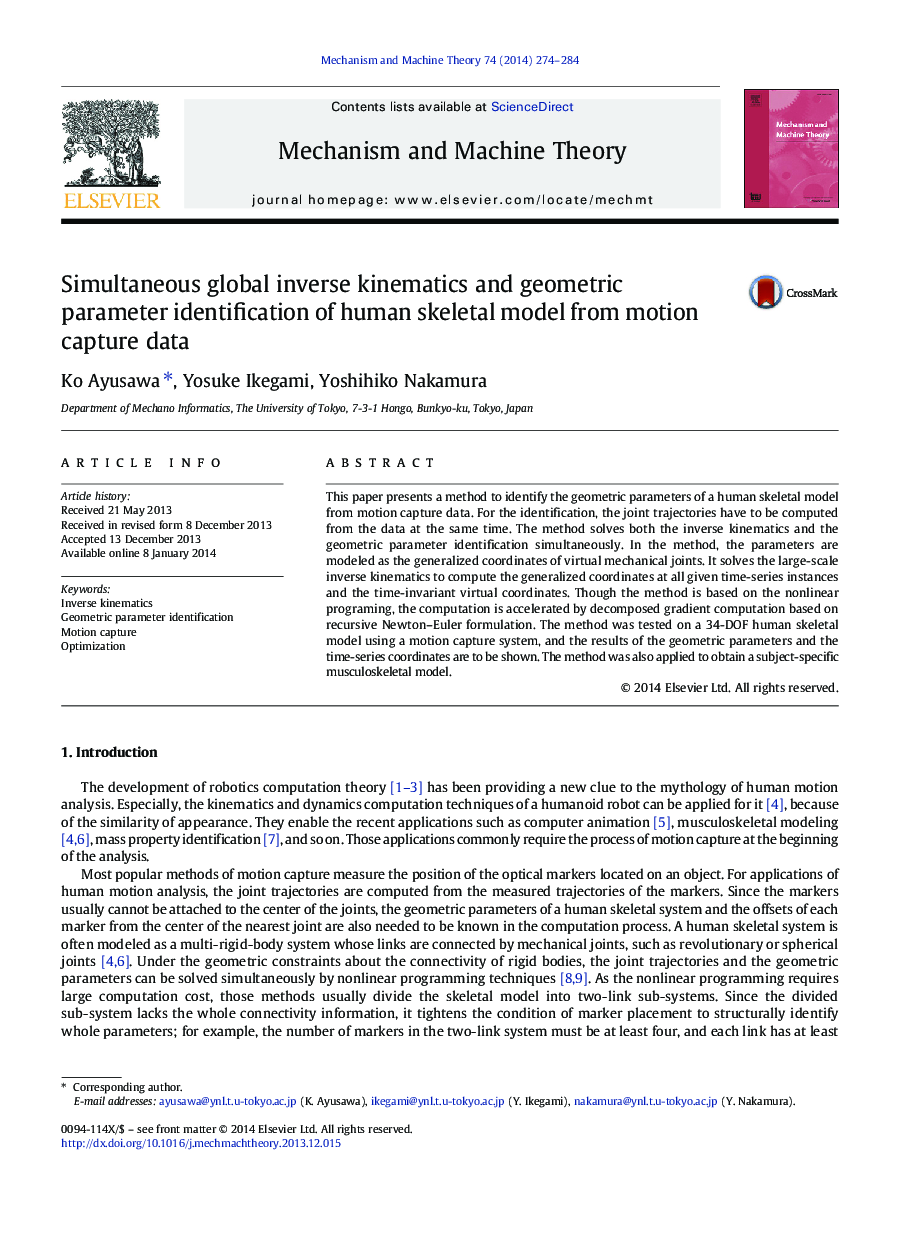| Article ID | Journal | Published Year | Pages | File Type |
|---|---|---|---|---|
| 7180110 | Mechanism and Machine Theory | 2014 | 11 Pages |
Abstract
This paper presents a method to identify the geometric parameters of a human skeletal model from motion capture data. For the identification, the joint trajectories have to be computed from the data at the same time. The method solves both the inverse kinematics and the geometric parameter identification simultaneously. In the method, the parameters are modeled as the generalized coordinates of virtual mechanical joints. It solves the large-scale inverse kinematics to compute the generalized coordinates at all given time-series instances and the time-invariant virtual coordinates. Though the method is based on the nonlinear programing, the computation is accelerated by decomposed gradient computation based on recursive Newton-Euler formulation. The method was tested on a 34-DOF human skeletal model using a motion capture system, and the results of the geometric parameters and the time-series coordinates are to be shown. The method was also applied to obtain a subject-specific musculoskeletal model.
Related Topics
Physical Sciences and Engineering
Engineering
Industrial and Manufacturing Engineering
Authors
Ko Ayusawa, Yosuke Ikegami, Yoshihiko Nakamura,
